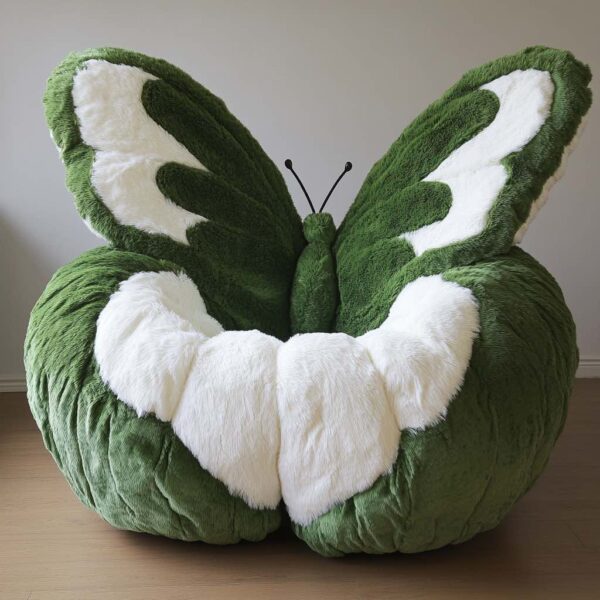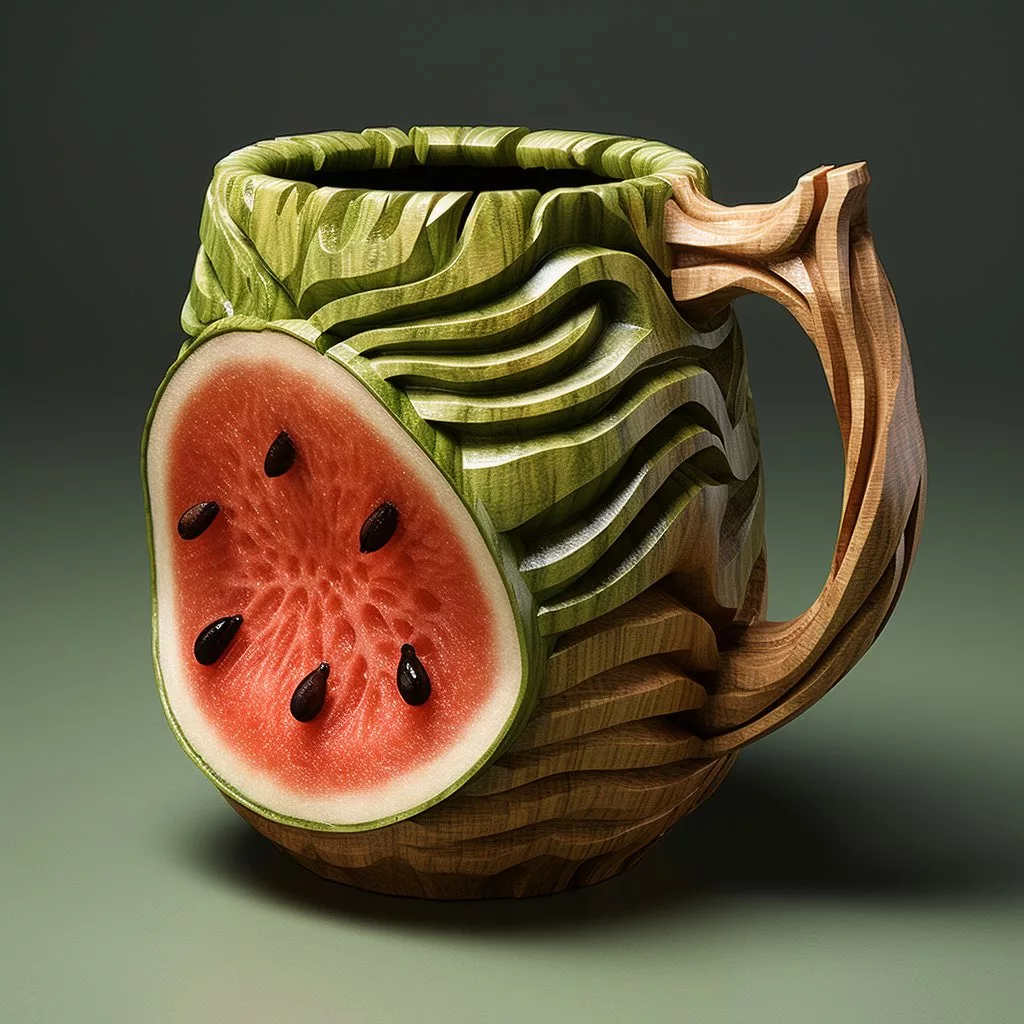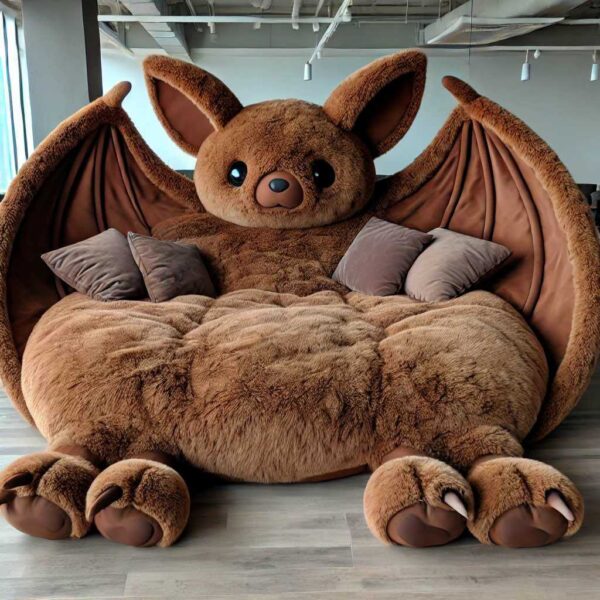In the world of modern furniture design, few pieces manage to capture both aesthetic elegance and structural ingenuity as seamlessly as the Butterfly Lounger . This distinctive seating solution has become a symbol of innovative craftsmanship, blending organic inspiration with contemporary comfort. Its name is not just a poetic nod to its visual resemblance to butterfly wings but also a reflection of the way it seems to float in any space it inhabits.
The Butterfly Lounger stands apart from traditional lounge chairs due to its sweeping curves, asymmetrical balance, and dynamic posture. It is more than just a place to sit—it’s an experience. Designed with the human form in mind, it invites relaxation while simultaneously acting as a sculptural centerpiece within a room. The lounger’s structure reflects a deep understanding of ergonomics, materials science, and artistic vision, making it a compelling subject for a closer look at how design can elevate everyday objects into iconic status.
This article delves deeply into the unique structure of Butterfly Loungers , exploring their origins, anatomical features, and the design philosophies that guide their creation. Through a comprehensive breakdown of their form, function, and symbolism, we will uncover why this piece continues to captivate designers, architects, and enthusiasts alike.

Contents
Part I: Origins and Evolution of the Butterfly Lounger
From Concept to Icon
The genesis of the Butterfly Lounger can be traced back to mid-20th century design movements that sought to redefine the relationship between furniture and space. Influenced by the rise of modernism and the Bauhaus school’s emphasis on functional aesthetics, designers began experimenting with forms that broke away from rigid, boxy structures. Among these innovations was a chair that took inspiration from nature—specifically, the delicate yet powerful shape of a butterfly’s wing.
Early prototypes of what would become the Butterfly Lounger were often handcrafted explorations of curvature and tension. These designs aimed to create a sense of lightness and movement, even when stationary. Over time, advancements in material technology allowed for greater flexibility in construction, enabling designers to push the boundaries of comfort and form.
One of the key turning points in the evolution of the Butterfly Lounger came with the integration of molded plywood and later, fiberglass-reinforced resin. These materials allowed for the creation of smooth, continuous surfaces without compromising structural integrity. As the design matured, so too did its cultural significance. What began as an experimental piece soon found its way into homes, galleries, and public spaces, becoming a statement of refined taste and forward-thinking design.
Cultural Impact and Design Legacy
The Butterfly Lounger quickly became more than just a chair; it evolved into a cultural artifact. Its presence in film sets, art exhibitions, and high-end interiors underscored its role as a symbol of sophistication and modernity. Designers around the world drew inspiration from its fluid lines and open silhouette, leading to variations that maintained the core essence of the original concept.
Despite its popularity, the Butterfly Lounger has never been mass-produced in the conventional sense. Instead, many versions are crafted with care, emphasizing quality over quantity. This artisanal approach reinforces the idea that each lounger is not merely a product but a carefully considered object of beauty and utility.
Today, the Butterfly Lounger continues to inspire new generations of designers who seek to reinterpret its structure through sustainable materials, digital fabrication, and modular adaptability. Its legacy is one of innovation, resilience, and timeless appeal—an enduring testament to the power of thoughtful design.
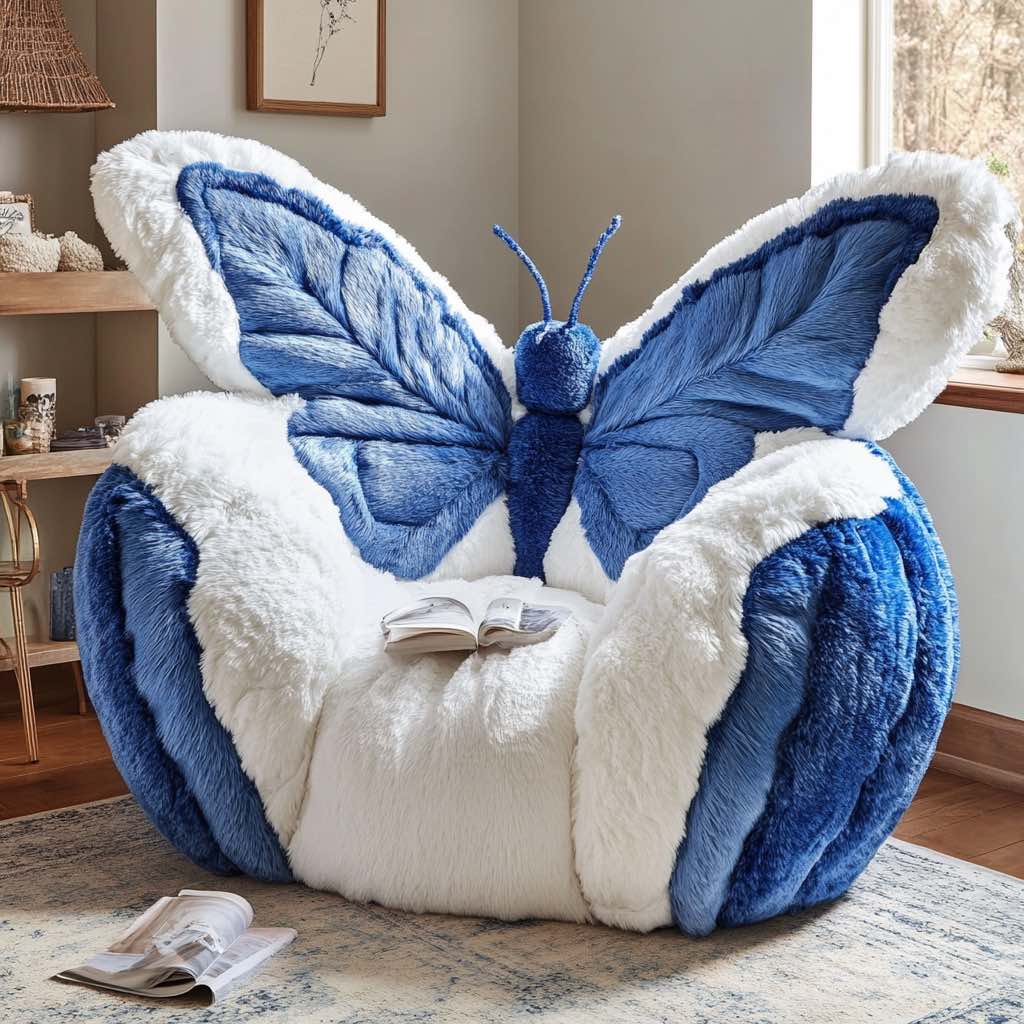
Part II: Anatomy of the Butterfly Lounger – Understanding Its Unique Structure
1. The Frame: A Foundation of Balance and Grace
At the heart of every Butterfly Lounger lies a meticulously engineered frame that serves as both a support system and a visual anchor. Unlike traditional lounge chairs that rely on straight lines and angular joints, the frame of a Butterfly Lounger is typically composed of curved, flowing elements that mimic the natural contours of the human body.
These frames are often constructed using a combination of wood, metal, or composite materials, chosen for their ability to bend and hold shape without losing strength. The curvature of the frame allows for a gentle recline, encouraging a relaxed posture that aligns with ergonomic principles. More importantly, the frame’s asymmetry—often a defining feature—creates a sense of movement, as if the lounger itself is caught mid-flight.
The base of the Butterfly Lounger is equally important. Whether it rests on slender legs or glides smoothly on a swivel mechanism, the foundation enhances both stability and mobility. Some models incorporate a floating base that appears to defy gravity, reinforcing the lightweight, ethereal quality that defines the design.
2. Upholstery and Padding: Comfort Meets Aesthetic Harmony
While the frame provides structure, the upholstery and padding transform the Butterfly Lounger into a sanctuary of comfort. Designers pay particular attention to the density and placement of foam, ensuring that pressure points are evenly distributed and that the body is cradled rather than compressed.
High-density memory foam or layered polyurethane cushions are commonly used to maintain shape and durability over time. The outer covering—whether fabric, leather, or synthetic alternatives—is selected not only for texture and softness but also for its ability to complement the lounger’s architectural form.
One of the most striking aspects of the Butterfly Lounger ‘s upholstery is its seamless integration with the frame. Unlike chairs where cushioning is visibly separate, the lounger’s padding often flows organically along the curves of the frame, creating a unified silhouette. This continuity contributes to the perception of the lounger as a single, cohesive entity rather than a collection of parts.
3. Armrests and Back Support: Ergonomic Precision
The armrests and backrest of a Butterfly Lounger are designed with precision to enhance user comfort while maintaining visual harmony. The armrests, often curving upward and outward like wings, provide support without obstructing movement. Their height and angle are calibrated to allow for easy entry and exit, as well as comfortable positioning for reading, lounging, or conversation.
The backrest, perhaps the most expressive element of the lounger, follows a similar philosophy. It gently conforms to the spine’s natural curve, offering lumbar support without being overly restrictive. In some models, the backrest extends beyond the shoulders, creating a cocoon-like effect that enhances privacy and immersion.
Designers frequently experiment with the degree of recline, incorporating mechanisms that allow users to adjust the angle of the backrest. However, many Butterfly Loungers embrace a fixed position, relying on the inherent geometry of the design to achieve optimal comfort. This intentional simplicity reinforces the notion that the lounger is not just a functional object but a sculptural experience.
4. Material Innovation: Tradition Meets Modernity
The choice of materials in crafting a Butterfly Lounger plays a crucial role in shaping its identity. Traditional models often featured molded plywood, a material prized for its strength and malleability. Today, designers explore a wide range of materials—from carbon fiber composites to biodegradable polymers—each offering unique properties that influence both aesthetics and sustainability.
Natural finishes such as walnut, oak, or teak highlight the grain and warmth of wood, while metallic accents introduce a sleek, futuristic edge. Upholstery choices vary widely, from luxurious velvets to breathable linens, allowing the lounger to adapt to different interior styles.
Some contemporary iterations of the Butterfly Lounger incorporate smart textiles or temperature-regulating fabrics, demonstrating how the design continues to evolve alongside technological advancements. Regardless of the materials used, the goal remains the same: to create a harmonious balance between tactile pleasure and visual allure.
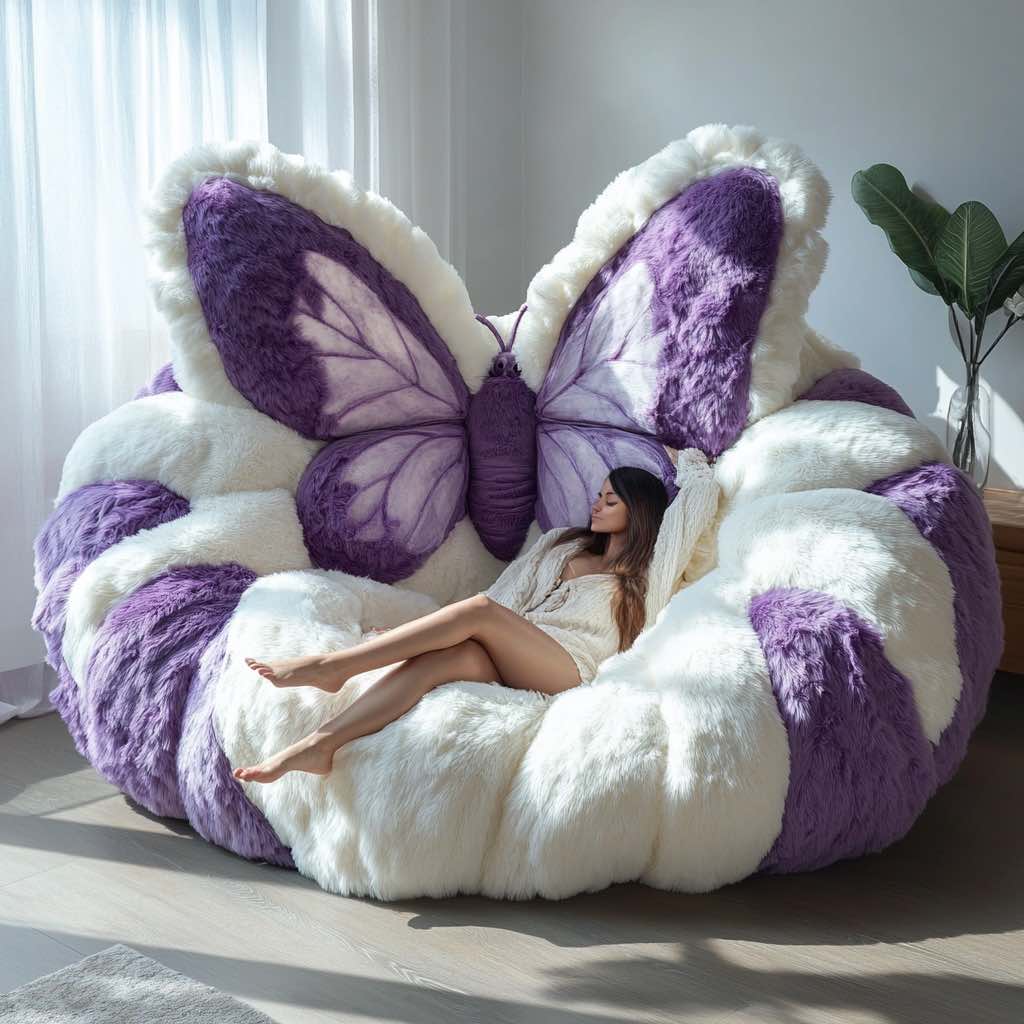
Part III: Design Philosophy Behind the Butterfly Lounger
Organic Inspiration: Nature as Blueprint
Perhaps the most profound aspect of the Butterfly Lounger lies in its deep connection to nature. The design draws heavily from biomimicry—the practice of emulating patterns and strategies found in the natural world. Just as a butterfly’s wings are both delicate and resilient, the lounger seeks to embody a similar duality: strength hidden within softness, structure cloaked in grace.
This organic inspiration is not merely aesthetic; it informs the very logic of the lounger’s construction. The curvature mimics the natural flex of muscle and bone, while the open spaces between components echo the transparency and flow found in insect anatomy. By grounding the design in biological principles, the Butterfly Lounger achieves a level of intuitiveness that feels almost instinctual to the human body.
Minimalism with Maximum Expression
Minimalist design often walks a fine line between simplicity and sterility. The Butterfly Lounger , however, manages to avoid this pitfall by infusing minimalism with emotional depth. Its clean lines and uncluttered profile do not detract from its character; instead, they amplify its expressive potential.
Every curve, joint, and seam is deliberate, serving a dual purpose: structural necessity and visual storytelling. The absence of unnecessary embellishments allows the lounger to communicate through form alone, making it a quiet yet commanding presence in any environment.
This minimalist ethos also extends to spatial efficiency. Despite its generous proportions, the Butterfly Lounger occupies space with elegance, fitting seamlessly into both expansive living areas and compact urban dwellings. Its ability to adapt to various settings without losing its identity is a testament to the universality of good design.
Emotional Resonance: Furniture as Experience
Beyond its physical attributes, the Butterfly Lounger resonates emotionally with those who encounter it. There is something inherently comforting about its embrace, something calming in its symmetry—or intentional asymmetry. Sitting in a Butterfly Lounger is not just a passive act; it becomes an experience of being held, supported, and elevated.
This emotional resonance stems from the interplay between design and psychology. The lounger’s form evokes a sense of openness and vulnerability, inviting users to let go of tension and surrender to relaxation. At the same time, its structural confidence instills a feeling of security and trust.
Interior designers often use the Butterfly Lounger as a focal point precisely because of this emotional impact. Placed near a window, beside a fireplace, or in the center of a room, it commands attention not through loudness but through presence. It encourages mindfulness, contemplation, and a deeper appreciation for the spaces we inhabit.
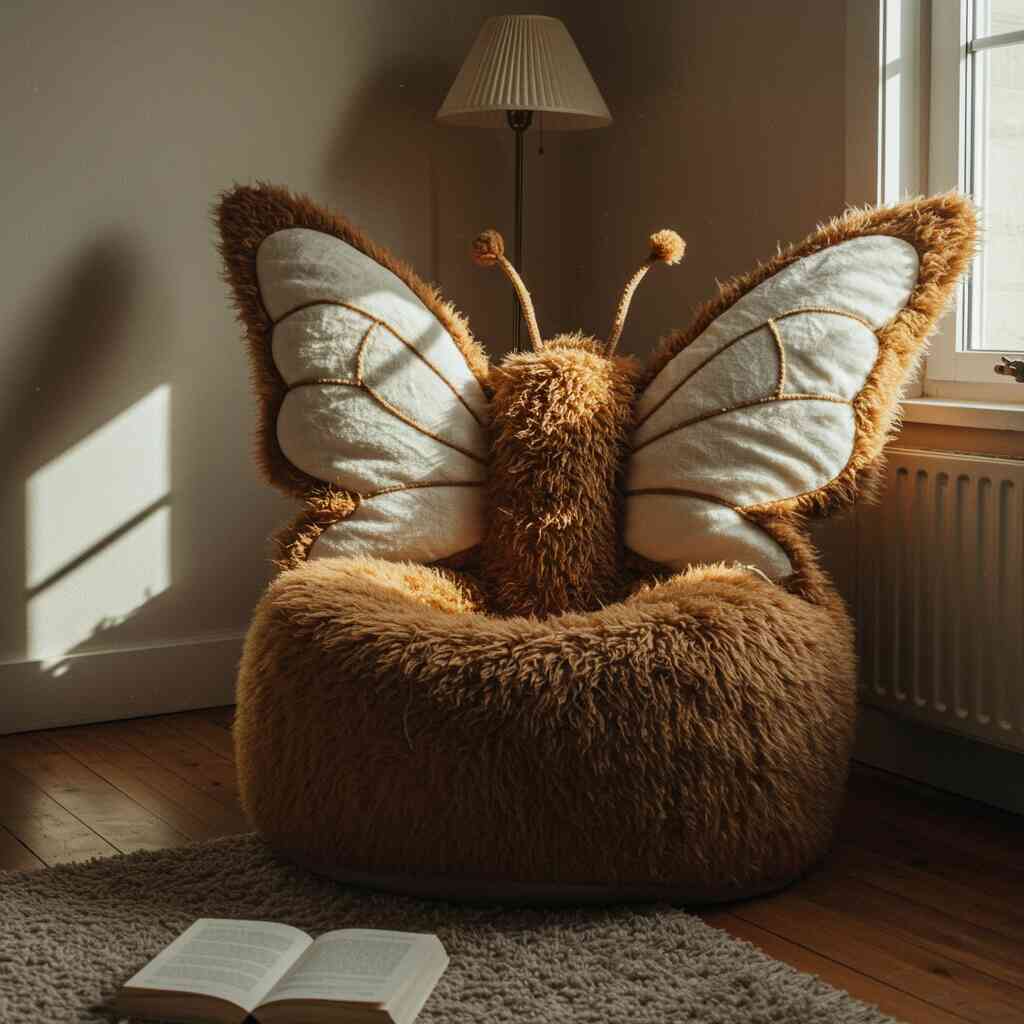
Part IV: Spatial Dynamics – How Butterfly Loungers Interact with Interior Environments
A Sculptural Presence in Any Room
One of the defining characteristics of Butterfly Loungers is their ability to transcend the functional realm of furniture and enter the domain of sculpture. Unlike more utilitarian seating options that fade into the background, these loungers command attention without overwhelming a space. Their sweeping lines and open forms allow them to occupy a room with presence while maintaining visual lightness.
The spatial dynamics of a Butterfly Lounger are carefully considered. Its structure allows it to be placed at the center of a room without feeling obstructive. In fact, many designers use it as a central anchor around which other elements are arranged. Whether positioned near a window for natural light or within a reading nook for intimate comfort, the lounger enhances the ambiance of its surroundings rather than competing with it.
Because of its sculptural nature, the Butterfly Lounger often functions as a conversation piece. It invites interaction—not just physical, but intellectual and emotional. People are drawn to its form, curious about its construction, and eager to experience its comfort. This makes it especially effective in public spaces such as lobbies, galleries, and hotel lounges, where atmosphere and user engagement are paramount.
Integration with Modern Architecture
In contemporary architecture, there is a growing emphasis on fluidity—between indoor and outdoor spaces, between private and communal areas, and between structural elements and decorative ones. The Butterfly Lounger aligns seamlessly with this philosophy. Its organic curves echo the sweeping geometries found in modern buildings, from curved glass facades to undulating concrete structures.
Architects and interior designers frequently incorporate Butterfly Loungers into spaces that emphasize openness and minimalism. These loungers complement open-plan living areas by providing defined zones for relaxation without the need for walls or partitions. Their asymmetry introduces movement into static environments, creating a sense of rhythm and flow that enlivens even the most neutral interiors.
Moreover, because of their elevated bases and floating appearance, Butterfly Loungers contribute to the illusion of height and depth in smaller rooms. They do not feel bulky or grounded; instead, they seem to hover slightly above the floor, enhancing the perception of space. This quality makes them particularly suitable for apartments, lofts, and minimalist homes where maximizing visual airiness is essential.
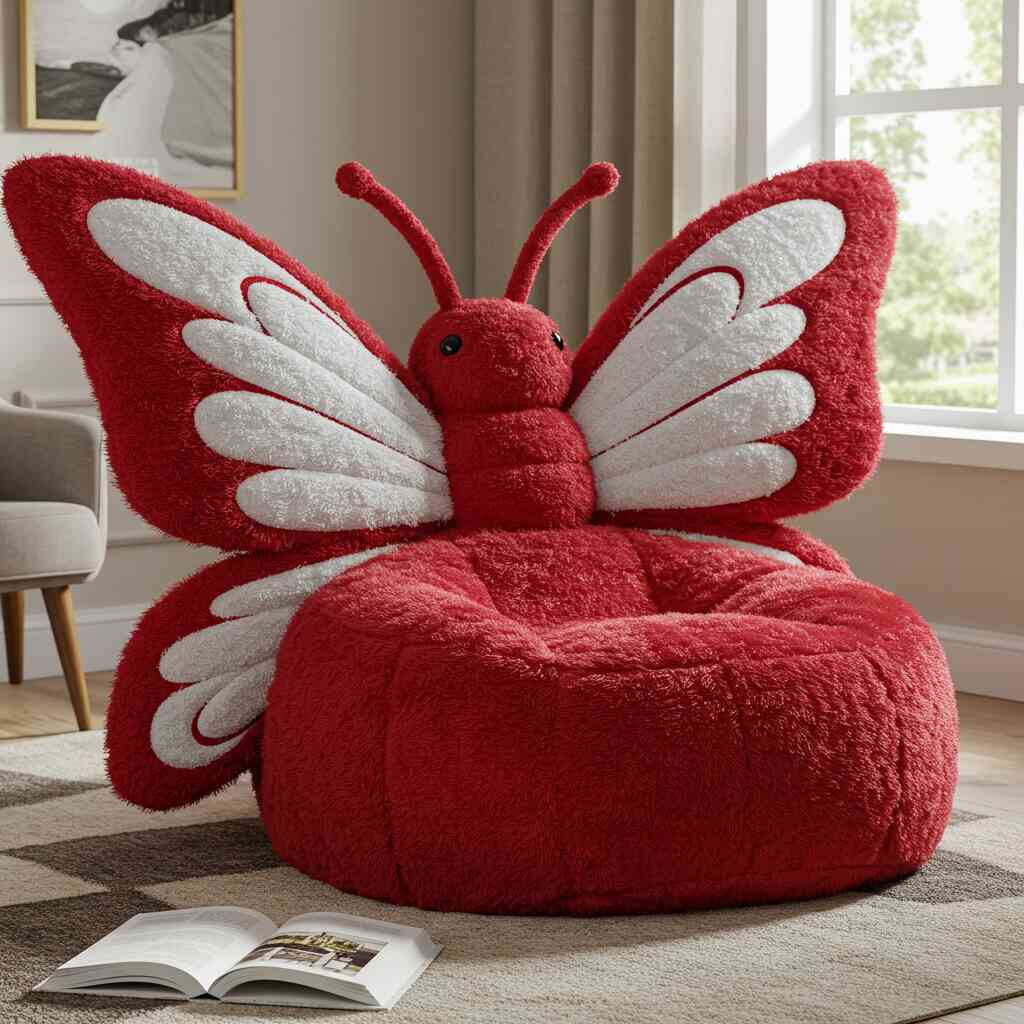
Lighting and Shadow Play: Enhancing Atmosphere
Another fascinating aspect of the Butterfly Lounger ‘s relationship with space is how it interacts with light. The contours of its frame create subtle shadows that shift throughout the day, transforming the lounger into a dynamic object that changes with the environment. Natural sunlight filters through the negative space between the armrests and backrest, casting intricate patterns on surrounding surfaces.
Interior lighting can also be used strategically to highlight the lounger’s form. Placing a directional spotlight behind or beside it can accentuate its curves, turning it into a focal point even after dark. Some designers take this concept further by incorporating LED strips beneath the base or within the frame, adding a futuristic glow that enhances the lounging experience.
This interplay between light and shadow adds another dimension to the Butterfly Lounger ‘s presence. It becomes not just a place to sit, but a living element within the interior—a piece that breathes with the time of day and the mood of the room.
Placement Strategies for Optimal Impact
To fully appreciate the spatial impact of a Butterfly Lounger , thoughtful placement is key. Here are some strategic approaches that interior designers often employ:
- Corner Accentuation : Placing a Butterfly Lounger in a corner can soften sharp angles and add warmth to what might otherwise be a neglected area. Pairing it with a side table and a floor lamp creates a cozy reading spot.
- Floating Arrangements : Instead of pushing the lounger against a wall, placing it in the middle of a room allows it to be viewed from all sides. This works especially well in large living rooms or studio apartments.
- Symmetrical vs. Asymmetrical Balance : While the lounger itself may have an asymmetrical design, pairing it with a similarly styled counterpart or balancing it with angular pieces can create harmony within a space.
- Window Proximity : Positioning the lounger near a window capitalizes on natural light and offers a view, making it ideal for relaxation and contemplation.
Each of these strategies underscores how the Butterfly Lounger is not merely a passive object in a room but an active participant in shaping the experience of that space.
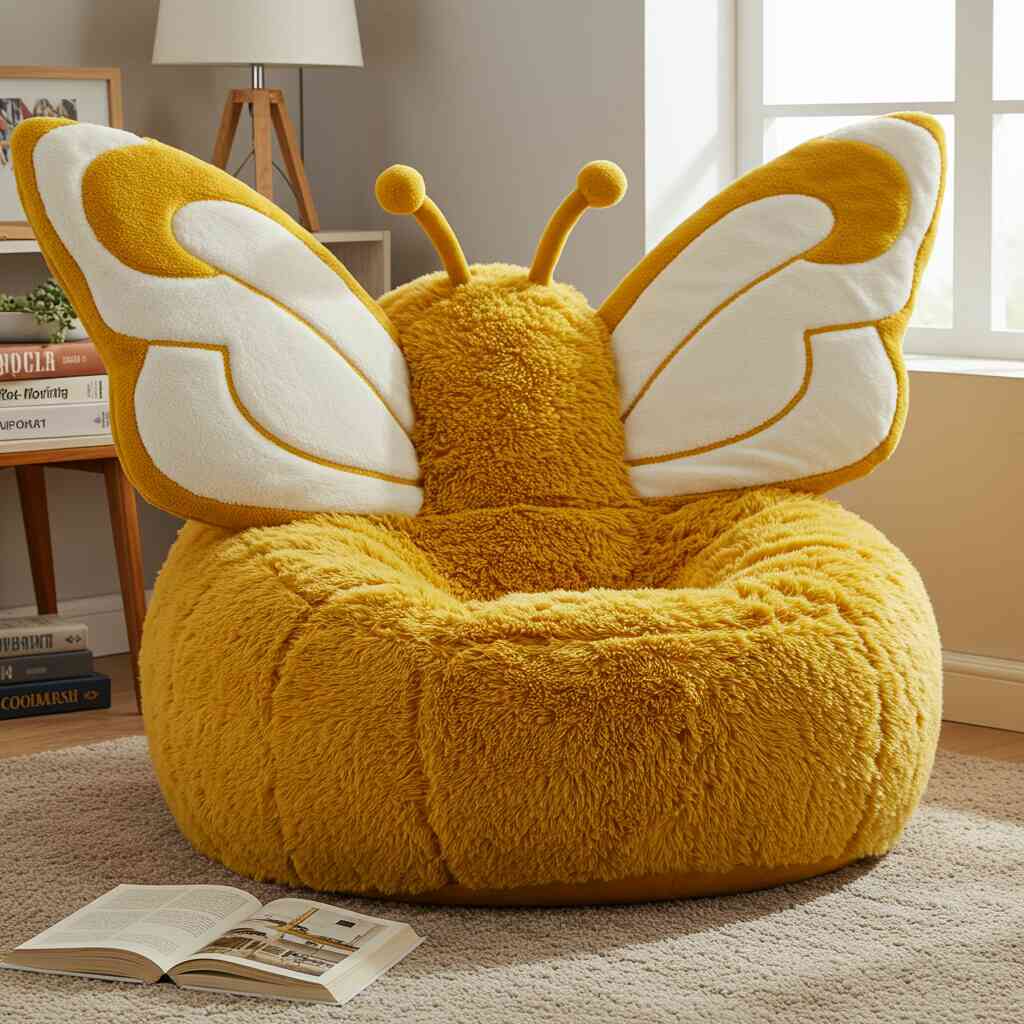
Part V: Psychological and Emotional Impact of Butterfly Loungers
Design That Invites Mindfulness
Beyond their physical comfort and aesthetic appeal, Butterfly Loungers exert a psychological influence on those who interact with them. Their unique structure encourages a state of mindfulness—an awareness of the present moment and a deeper connection to one’s surroundings.
The reclined posture facilitated by the lounger naturally slows down breathing and heart rate, promoting a sense of calm. The gentle curvature of the frame mirrors the body’s own shape, reinforcing a feeling of being embraced and supported. This physical alignment fosters mental ease, making the Butterfly Lounger an ideal seat for meditation, reflection, or simply unwinding after a long day.
Creating a Sense of Sanctuary
In today’s fast-paced world, personal sanctuaries within the home are more important than ever. The Butterfly Lounger contributes to this sense of sanctuary by offering a dedicated space for retreat. Whether placed in a quiet bedroom, a sunroom filled with greenery, or a secluded corner of a living area, it signals a zone of respite.
Its cocoon-like design envelops the user, creating a micro-environment that feels both private and secure. This sense of enclosure is not restrictive but rather comforting—like being wrapped in a soft blanket. The lounger becomes a refuge from external stimuli, allowing individuals to disconnect from digital distractions and reconnect with themselves.
Social Connection Through Design
Interestingly, despite its association with solitude, the Butterfly Lounger also facilitates social connection when integrated thoughtfully into shared spaces. When paired with a matching model or placed opposite a sofa, it encourages conversation. The slightly reclined position invites relaxed dialogue, free from the formal constraints of upright seating.
In commercial settings like cafes or co-working spaces, Butterfly Loungers are often arranged in clusters, fostering casual interactions among patrons. Their inviting form makes people feel welcome and at ease, subtly encouraging engagement and community.
This dual function—as both a private retreat and a social catalyst—speaks to the versatility of the Butterfly Lounger . It adapts to the needs of the user, whether seeking solitude or companionship, making it a deeply human-centered design.

Conclusion: The Enduring Appeal of the Butterfly Lounger
The Butterfly Lounger is more than a piece of furniture—it is a celebration of design’s capacity to merge beauty, functionality, and meaning. Its unique structure tells a story of innovation rooted in nature, executed with precision, and imbued with emotional intelligence. From its graceful frame to its thoughtful upholstery, every detail contributes to an experience that transcends mere seating.
As we continue to reimagine our living environments, the Butterfly Lounger remains a beacon of inspiration. It challenges us to see furniture not as static objects but as dynamic participants in our daily lives. Whether placed in a private residence, a public gallery, or a commercial space, it reminds us that design, at its best, is an extension of our humanity.
Ultimately, the Butterfly Lounger endures because it speaks a universal language—one of elegance, comfort, and quiet revolution. It is a testament to what happens when creativity meets craftsmanship, when form follows function with poetry rather than rigidity. And in a world increasingly defined by complexity, it offers a moment of stillness—a place to rest, reflect, and simply be.

